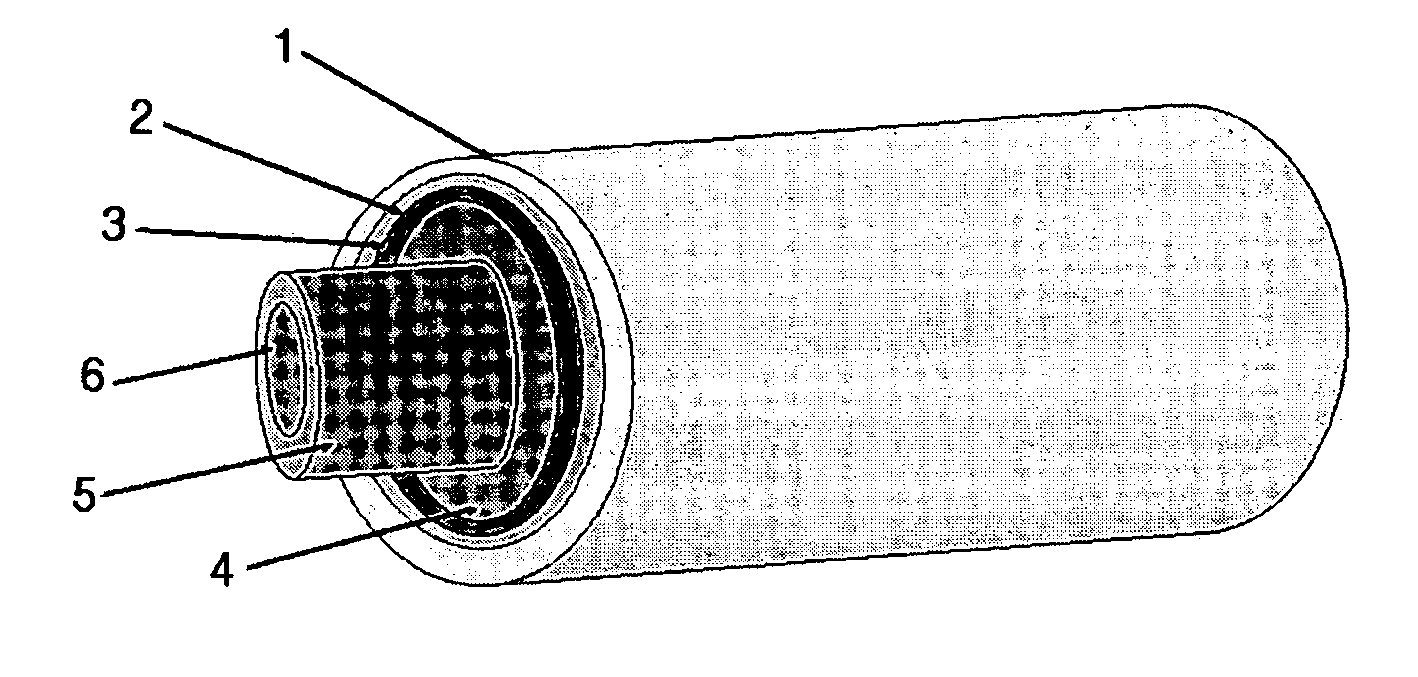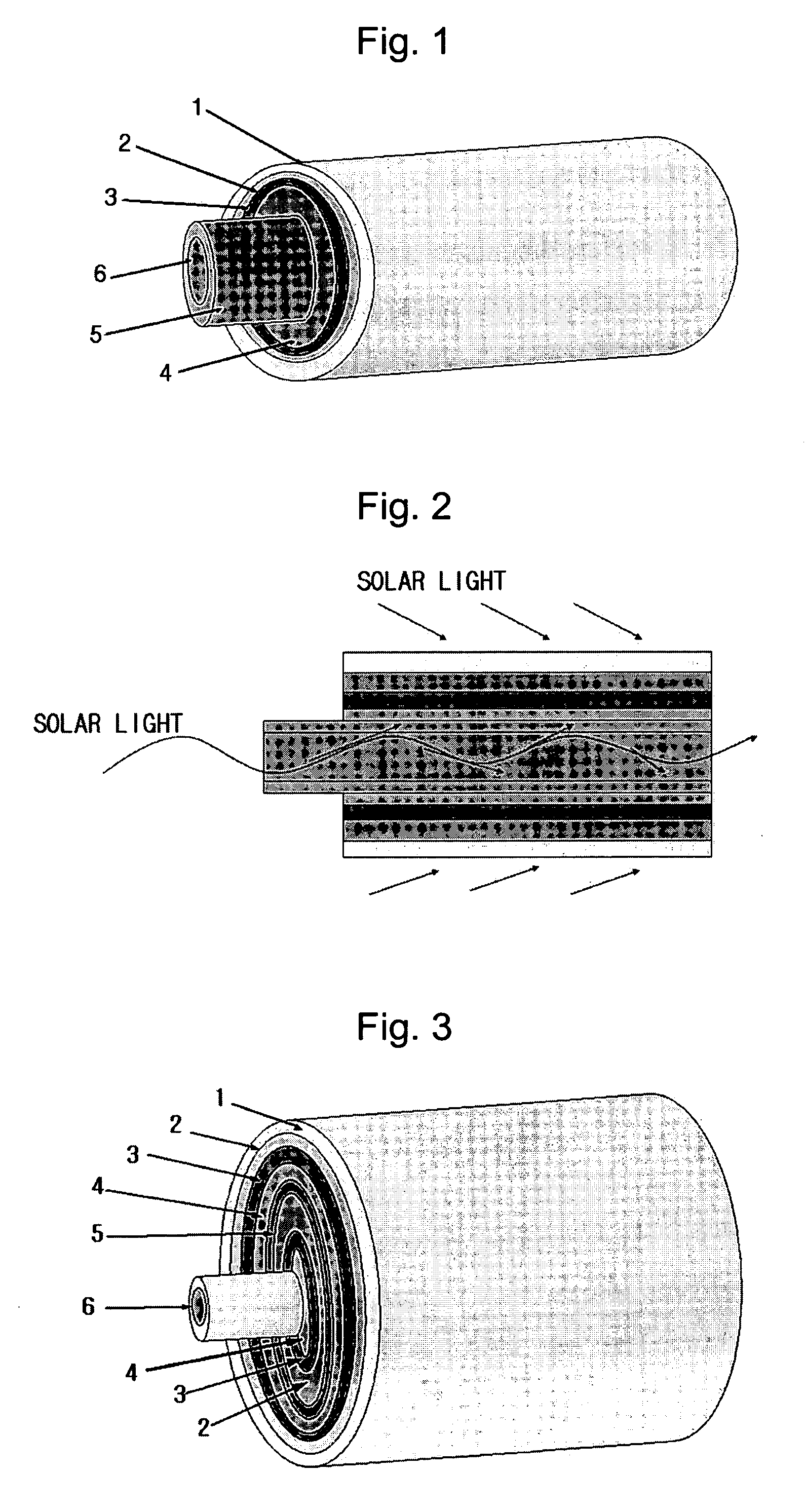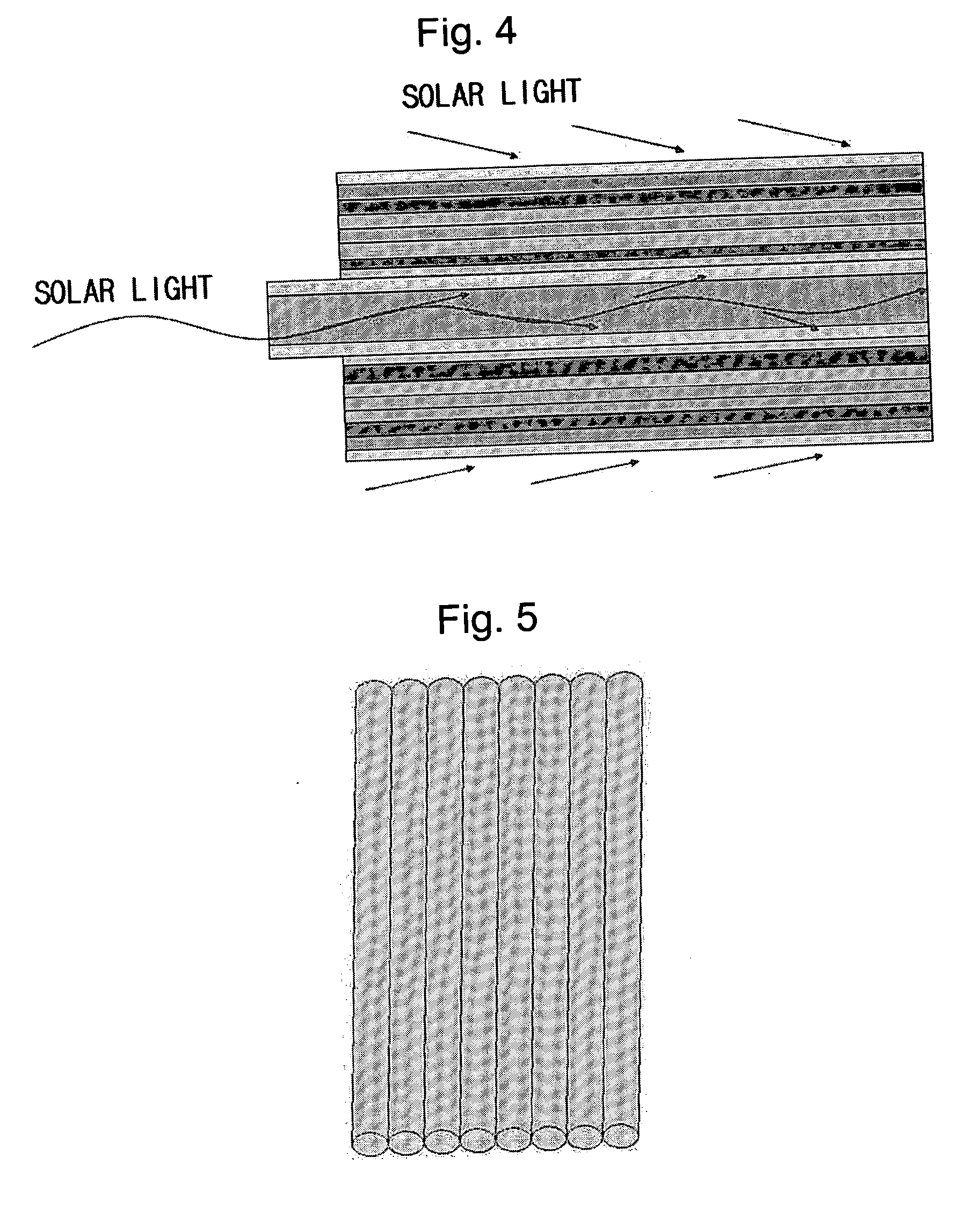Flexible solar cell and method of producing the same
- Summary
- Abstract
- Description
- Claims
- Application Information
AI Technical Summary
Benefits of technology
Problems solved by technology
Method used
Image
Examples
example 1
[0071] A cylindrical counter electrode was formed by sequentially coating PET and ITO on an optical fiber having a length of 5 cm and a diameter of 1 mm. A gel-like electrolyte solution of I3− / I−, produced by dissolving 0.8 M of 1,2-dimethyl-3-octyl-imidazolium iodide and 40 mM of I2 in N-methyl-2-pyrrolidone, was coated on the cylindrical surface of the counter electrode.
[0072] Separately, a titanium dioxide colloidal solution was prepared by adding titanium isopropoxide and acetic acid to an autoclave maintained at 220° C. and carrying out hydrothermal synthesis. The obtained solution was subjected to solvent evaporation until the proportion of titanium dioxide became 12% by weight, to prepare a titanium dioxide colloidal solution containing nano-sized particles (the particle size being in the range of about 5 to 30 nm).
[0073] The cylindrical surface having the electrolyte layer formed thereon was coated with the titanium dioxide colloidal solution, and then the cell assembly wa...
example 2
[0075] First, slurries for a heavy mineral oil, a counter electrode, an electrolyte layer, a metal oxide layer, a dye and a conductive transparent substrate, respectively, were prepared.
[0076] PET and ITO were used for the counter electrode and the conductive transparent substrate, respectively, and an electrolyte solution of I3− / I− formed by dissolving 0.8 M 1,2-dimethyl-3-octyl-imidazolium and 40 mM I2 in N-methyl-2-pyrrolidone was used for the electrolyte layer. A 0.2 mM solution of ruthenium dithiocyanate 2,2′-bipyridyl-4,4′-dicarboxylate was used as the dye.
[0077] For the metal oxide layer, a titanium dioxide colloidal solution was prepared by adding titanium isopropoxide and acetic acid to an autoclave maintained at 220° C. and carrying out hydrothermal synthesis. The obtained solution was subjected to solvent evaporation until the proportion of titanium dioxide became 12% by weight, to prepare a titanium dioxide colloidal solution containing nano-sized particles (the partic...
example 3
[0079] A cylindrical conductive transparent electrode was formed by sequentially coating PET and ITO on the surface of an optical fiber having a length of 5 cm and a diameter of 1 mm. A gel-like electrolyte solution of I3− / I−, produced by dissolving 0.8 M of 1,2-dimethyl-3-octyl-imidazolium iodide and 40 mM of I2 in N-methyl-2-pyrrolidone was coated on the cylindrical surface of the conductive transparent electrode.
[0080] Separately, a titanium dioxide colloidal solution was prepared by adding titanium isopropoxide and acetic acid to an autoclave maintained at 220° C. and carrying out hydrothermal synthesis. The obtained solution was subjected to solvent evaporation until the proportion of titanium dioxide became 12% by weight, to prepare a titanium dioxide colloidal solution containing nano-sized particles (the particle size being in the range of about 5 to 30 nm).
[0081] The cylindrical surface having the electrolyte layer formed thereon was coated with the titanium dioxide collo...
PUM
 Login to View More
Login to View More Abstract
Description
Claims
Application Information
 Login to View More
Login to View More - R&D
- Intellectual Property
- Life Sciences
- Materials
- Tech Scout
- Unparalleled Data Quality
- Higher Quality Content
- 60% Fewer Hallucinations
Browse by: Latest US Patents, China's latest patents, Technical Efficacy Thesaurus, Application Domain, Technology Topic, Popular Technical Reports.
© 2025 PatSnap. All rights reserved.Legal|Privacy policy|Modern Slavery Act Transparency Statement|Sitemap|About US| Contact US: help@patsnap.com



